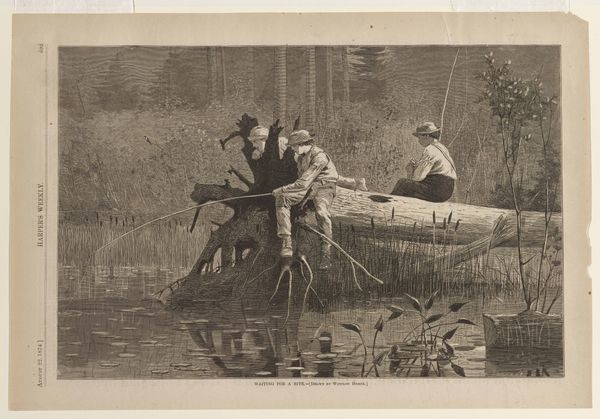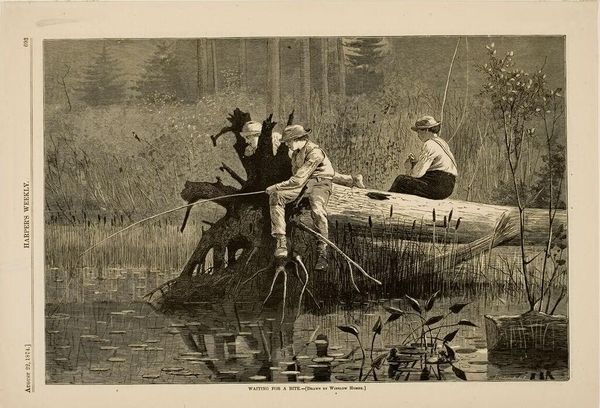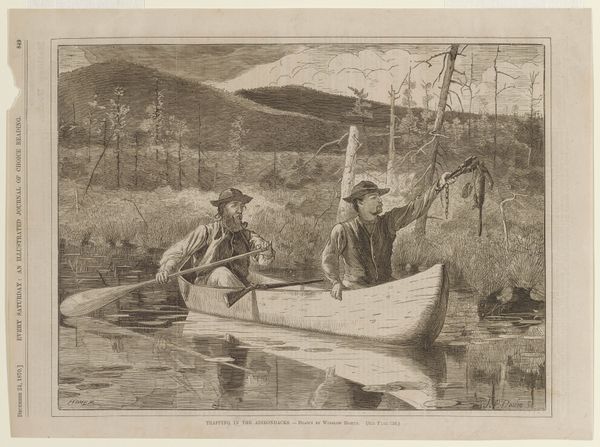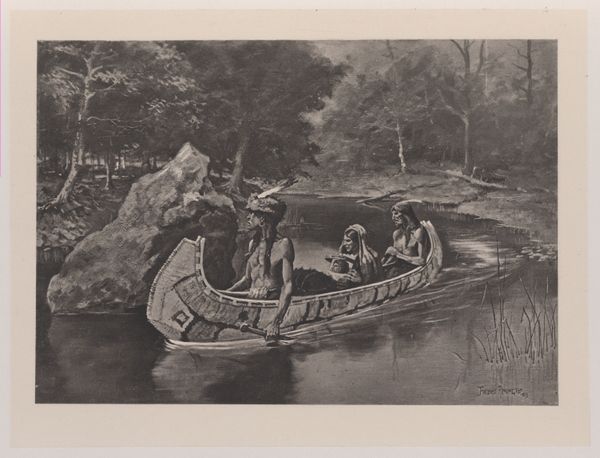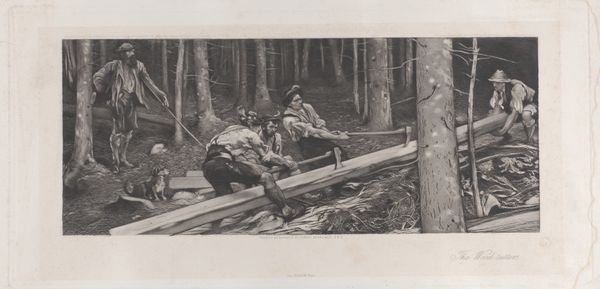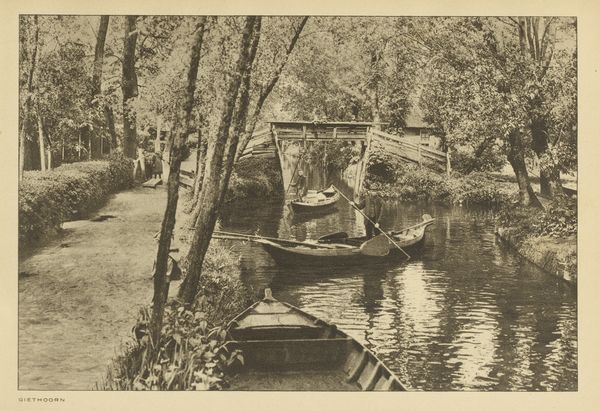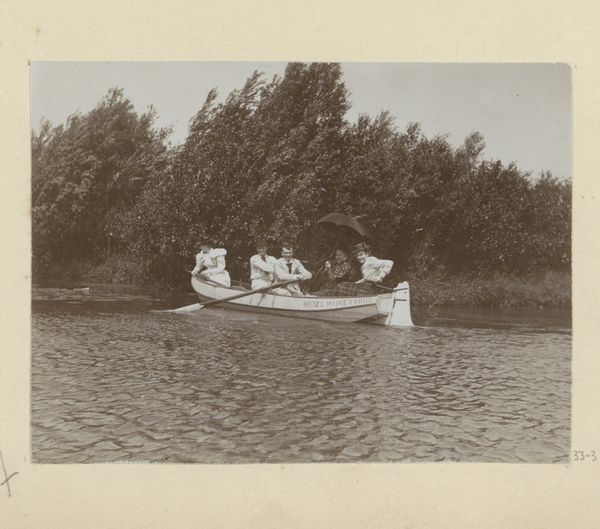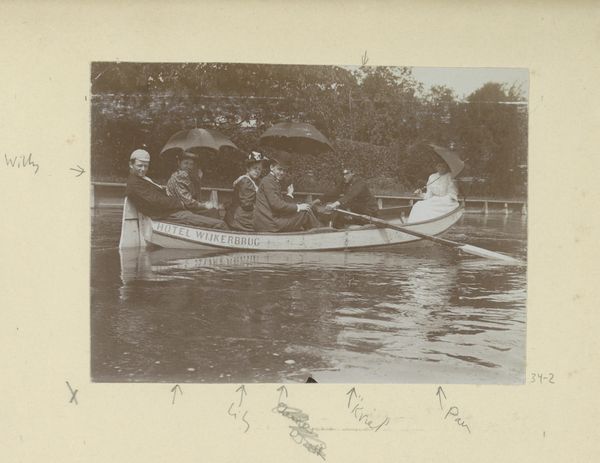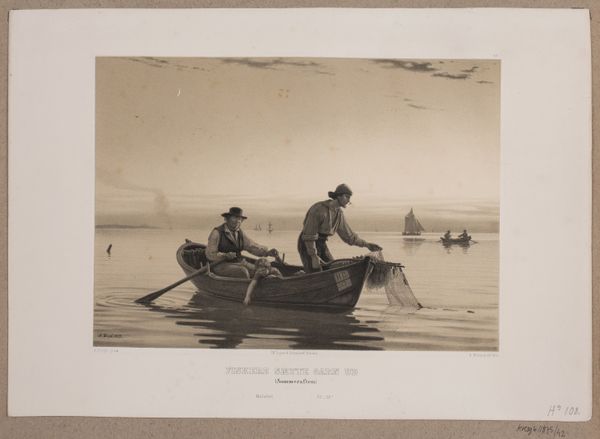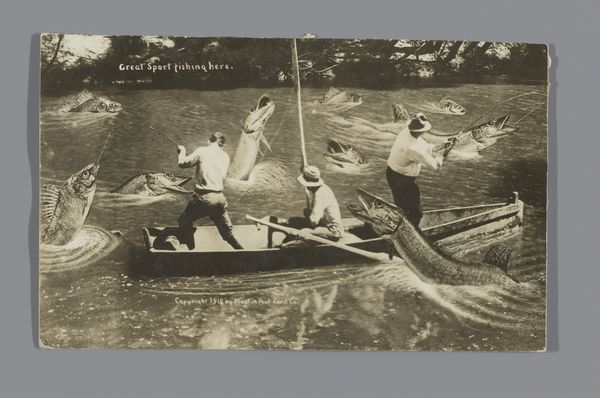
Waiting for a Bite (from "Harper's Weekly," Vol. XVIII) 1874
0:00
0:00
drawing, print, plein-air, photography, woodcut, engraving
#
drawing
#
narrative-art
# print
#
impressionism
#
plein-air
#
landscape
#
boy
#
figuration
#
photography
#
historical photography
#
woodcut
#
19th century
#
ashcan-school
#
line
#
genre-painting
#
engraving
#
realism
Dimensions: image: 3 9/16 x 5 7/16 in. (9.1 x 13.8 cm) sheet: 10 11/16 x 15 7/8 in. (27.1 x 40.4 cm)
Copyright: Public Domain
Curator: What strikes me first is the quiet stillness; there’s an almost photographic quality to this wood engraving. Editor: That’s fascinating, especially knowing it appeared in the August 22nd, 1874, edition of "Harper's Weekly" and is titled "Waiting for a Bite." Winslow Homer, as the artist, likely understood its function as both art and a consumable, easily disseminated image. The materiality is critical to its widespread availability. Curator: Precisely. The stark black-and-white medium enhances that feeling of isolation and quiet observation. Note how the light plays on the water's surface and highlights the stillness of the boys. There are no dramatic strokes or marks. The artist utilizes labor intensive carving techniques, in an attempt to recreate photographic light and composition. Editor: Right, its broad distribution means that its political and social dimensions need to be discussed as well. We have two young men fishing. This speaks to themes of leisure and labor, especially in a post-Civil War America, in the Reconstruction period, a nation grappling with its identity. Also consider that these boys are working on a pastime. What materials did they use for it and where they were procured? Curator: Absolutely, thinking about access and consumption is crucial here. I wonder too about the process of transferring Homer's original artwork onto the woodblock. Who were the artisans involved? How did their labor shape the final image consumed by the magazine's readership? There’s a democratization, maybe even homogenization, of the original art work being presented. Editor: Indeed. These prints provided a vital form of visual culture to a broad public. An example of how art was used to tell a visual story and convey the culture of the American population, solidifying itself as a major institution for cultural memory and civic identity in the burgeoning Gilded Age. I find it's lasting popularity incredibly significant. Curator: Agreed. Reflecting on this print reminds us that images aren't just aesthetic objects but products of intricate networks of labor, material, and distribution—essential facets of our cultural fabric. Editor: It's more than just the pretty image. I’m leaving with an insight on how powerful the consumption and commodification of everyday art objects are, how relevant its social story remains even today.
Comments
No comments
Be the first to comment and join the conversation on the ultimate creative platform.
